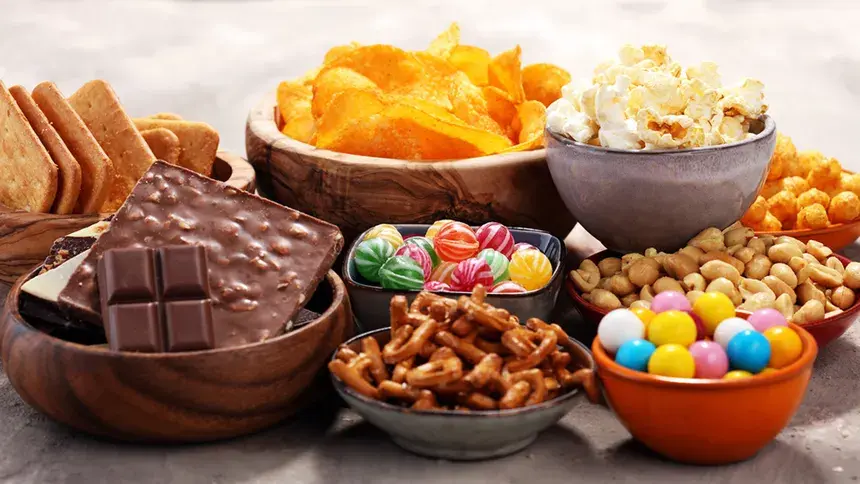Unending Hunger: Understanding Prader-Willi Syndrome
- Adele

- Jun 20
- 3 min read
Updated: Jun 22
In most people, hormones send signals to the brain that regulate appetite by triggering feelings of hunger and fullness. What happens when this system doesn’t work? Prader-Willi Syndrome is a rare genetic condition that causes an extreme, persistent appetite. Beyond hunger, individuals with Prader-Willi Syndrome face many challenges in their daily lives.
The Science Behind Prader-Willi Syndrome
Prader-Willi Syndrome results from the loss of function of genes on chromosome 15 (Foundation for Prader-Willi Research, 2020). In a process called genomic imprinting, each person inherits a copy of chromosome 15 from both parents, but only the paternal copy is active (National Human Genome Research Institute, 2025). Most cases of Prader-Willi Syndrome result from missing or non-functional genes on the paternal copy. Some people also inherit two maternal copies of chromosome 15, which are both inactivated (Foundation for Prader-Willi Research, 2020). These missing genes provide instructions for producing small nucleolar RNAs (snoRNAs), which help create important proteins (Driscoll et al., 2024). Therefore without snoRNAs, the proteins responsible for regulating hunger are not synthesized.

Living with the Disorder
In infancy, symptoms include feeding difficulties, poor appetite, and low muscle tone. Infants also develop distinct physical features, which include almond-shaped eyes, a long and narrow head, small hands and feet, and short stature. These symptoms are followed by cognitive development issues, emotional outbursts, and polyphagia in childhood (Driscoll et al., 2024). Polyphagia describes the feeling of extreme, insatiable hunger and often causes chronic overeating, which leads to obesity (Martínez Michel et al., 2016).

Management and Treatment
There is no cure for Prader-Willi Syndrome, but its symptoms are treatable. The most important aspect of treatment is maintaining a healthy weight, which is especially difficult because individuals with Prader-Willi Syndrome need fewer calories than most people. Caring for individuals with Prader-Willi Syndrome often involves hiding food and limiting access to it other than mealtimes. Children may also undergo hormone treatments that improve muscle tone and help change the physical features associated with the disorder (NHS England, 2017).
Key TakeAways
Prader-Willi Syndrome causes significant physical, cognitive, and behavioral challenges. Though symptoms are treatable, individuals with Prader-Willi Syndrome often require lifelong support and caregiving. Continued research is essential to developing better treatments and improving the lives of people with this disorder.
References
Driscoll, D. J., Miller, J. L., & Cassidy, S. B. (1993). Prader-Willi Syndrome. In M. P. Adam, J. Feldman, G. M. Mirzaa, R. A. Pagon, S. E. Wallace, & A. Amemiya (Eds.), GeneReviews®. University of Washington, Seattle. http://www.ncbi.nlm.nih.gov/books/NBK1330/
Prader-Willi syndrome: MedlinePlus Genetics. (n.d.). Retrieved June 15, 2025, from https://medlineplus.gov/genetics/condition/prader-willi-syndrome/
Michel, L. M., Haqq, A. M., & Wismer, W. V. (2016, April 1). A review of chemosensory perceptions, food preferences and food-related behaviours in subjects with Prader–Willi Syndrome—ScienceDirect. https://www.sciencedirect.com/science/article/abs/pii/S0195666315301306
Research, F. for P.-W. (n.d.). What is Prader-Willi Syndrome. Retrieved June 15, 2025, from https://www.fpwr.org/what-is-prader-willi-syndrome
Prader-Willi syndrome—Management. (2017, October 23). Nhs.Uk. https://www.nhs.uk/conditions/prader-willi-syndrome/living-with/
Coppen, E. (2018, October 29). Syndromes: Prader-Willi syndrome [Text]. RCNi. https://rcni.com/learning-disability-practice/evidence-and-practice/clinical/syndromes-prader-willi-syndrome-140846
Chauhan, D. T. (2023, January 11). The Molecular Mechanism of Genomic Imprinting. Genetic Education. https://geneticeducation.co.in/the-molecular-mechanism-of-genomic-imprinting/
Thumbnail: photograph taken by Siegfried Poepperl
_edited.png)


Comments